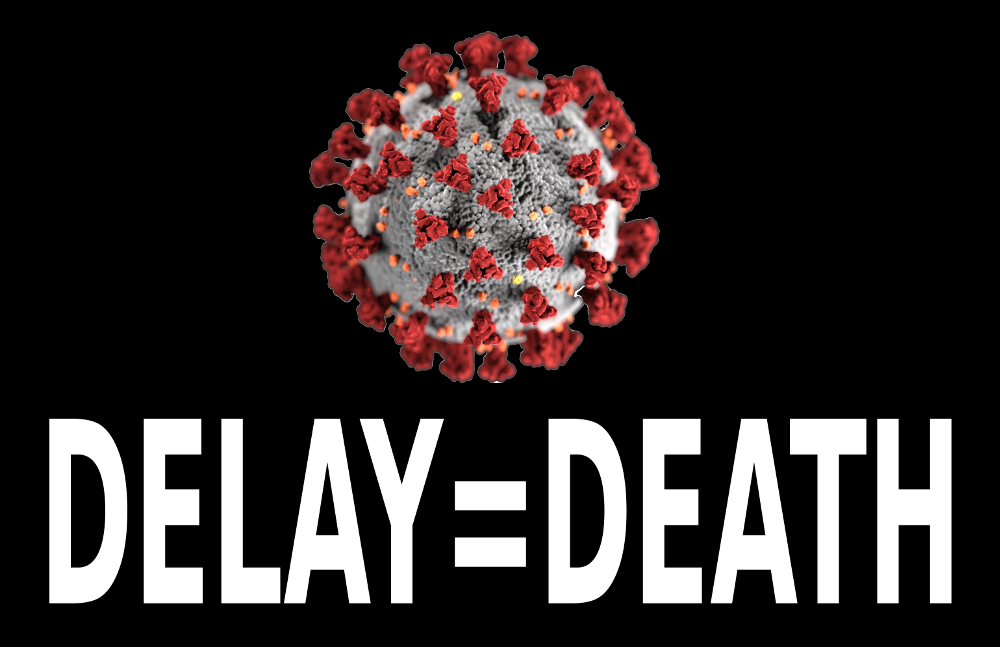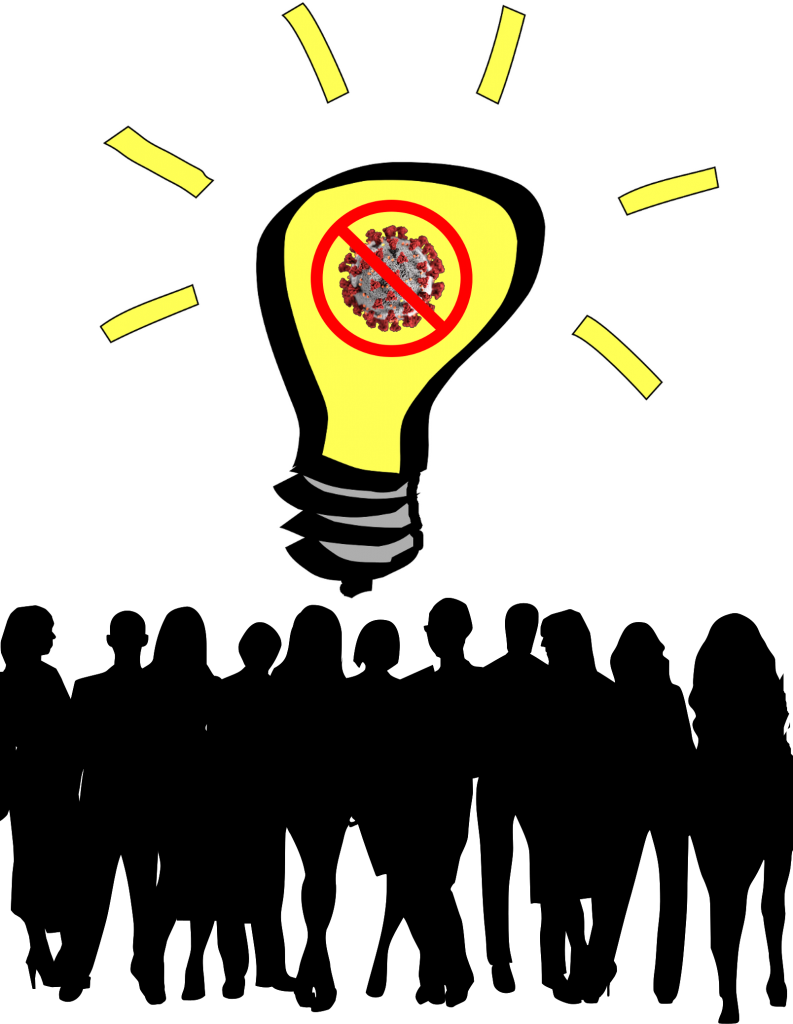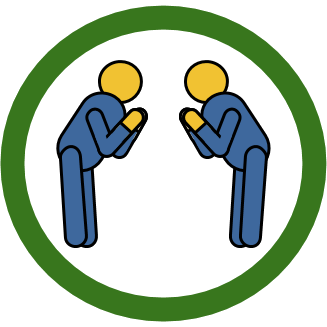Millions are now sitting at home, waiting our turns to play Russian roulette with COVID-19, while the economy and our social lives are in deep freeze.
To safely ease back to normalcy, we need to simultaneously: (a) prevent healthcare system overload and reduce unnecessary deaths; and (b) allow society — and the economy — to resume functioning. This balancing act will involve a protracted game of whack-a-mole with the virus, and the cost will be high, but it is far better than the alternatives.
There are four keys to achieve this balance, described below. USA’s recently enacted $2.2 trillion bailout will be wasted if these urgent actions are not taken.
⚓1. Free proactive mass testing. We need to rapidly test hundreds of millions — not mere thousands or millions — to detect silent spreaders and identify hot spot areas that need greater isolation. This is crucial because it enables restrictions to be targeted to the areas and individuals where and when they are needed, allowing other areas and individuals to function semi-normally. “You cannot fight a fire blindfolded.” Unfortunately, so far the USA’s focus has been on individual testing — after infection is already suspected — but that is too little and too late to stop the silent spreaders. Proactive mass testing should include:
- ⚓Make testing free. If the USA can afford a $2.2 trillion economic bailout, we can certainly afford the tests that will allow the economy to start moving again. Testing capacity needs to be ramped-up on an emergency basis, invoking the Defense Production Act if necessary. And all barriers to testing need to be removed, including threat of reprisal such as deportation.
- ⚓Test front-line workers daily — not only healthcare workers, but police, bus drivers, cashiers, etc. — anyone who works in close proximity with the public.
- ⚓Test everyone in areas that exceed a risk threshold that is determined by epidemiologists — not politicians. It can even be done door-to-door if needed.
- ⚓Improve testing technology, to be easier, safer, faster and more acceptable to the public. For example, a home nasal swab test is awaiting FDA approval. Faster, more palatable testing may be more effective than slower, more precise results. This trade-off needs to be calculated based on best-available evidence — not gut instinct.
- ⚓Mandate uniform county-level case reporting, in a standard machine-processable CSV format, at a stable URL for each state, and automatically aggregated at the national level in real time. This would be super easy to do, and it would help by giving us public health workers up-to-date intelligence.
⚓2. Comprehensive contact tracing — including second-generation tracing. This involves lots of human labor — China used over 1800 teams of 5 in Wuhan alone — but we cannot be stingy about it. This work should done by trained volunteers and others — not by doctors and nurses who are urgently needed on the front lines of treatment. We should also use technology to help, provided that privacy considerations are appropriately considered. For example, an open source privacy-respecting app could be developed, along the lines of Singapore’s Trace Together. Several independent app development efforts are under way — see lists here and here — but they should have state and federal support.
⚓3. Greater transmission prevention. This includes any measures, other than isolation, that reduce virus transmission, such as personal protective equipment, improved disinfection practices, and rules regarding workplaces and public places. Many actions are possible, including:
- ⚓Require public transport riders and workers to wear a mask and sanitize hands on entry and exit.
- ⚓Dramatically increase public transport capacity, to increase space between passengers.
- ⚓Continuously disinfect public transport and other public and semi-public areas — not merely once a day or once every 4 hours.
- ⚓Require front-line workers to wear masks — not only healthcare workers, but police, bus drivers, cashiers, etc. — anyone who must work in close proximity to the public.
- ⚓Require a mask and hand sanitizing to enter any workplace or enclosed public place.
- ⚓Require proof of recent (24 hour) negative test or immunity, as a condition of entry to workplaces, restaurants, theaters, etc.
- ⚓Require testing at borders, with daily follow-up testing and limited travel and contact for 14-days. If necessary, this could even be extended temporarily to certain domestic areas, such as outbreak hotspots or safe zones.
⚓4. Selective isolation. This applies both to individuals who may be infected, and to areas that need to enact temporary lockdowns when outbreaks occur. Since there is no effective treatment to cure COVID-19, isolation (quarantine) is still a vital component. Even in a free country, nobody has the right to spread disease. But proactive mass testing and comprehensive contact tracing enables isolation to be applied intelligently, only where/when needed.
Healthcare experts should measure the effectiveness of each of these measures and adjust or add new ones as appropriate.
Finally, actions at the national level should include:

- ⚓Form a Coronavirus Action Team, sponsored by 3-5 courageous state governors, to devise and coordinate effective action — nationally. Normally this would be done at the federal level, but we cannot afford more delay, downplaying and half measures against an exponentially growing disaster. Already thousands
will diehave died unnecessarily, as a direct result of the federal government’s inaction and ineffective action. We must not let more die unnecessarily due to even more delays and half measures. Governors should step forward to fill this leadership void instead, since they must act anyway, on behalf of their states. The core group needs to be small and fast, because speed is critical, but other governors should sign on as well, as supporters. The group should immediately assemble a tiger team of experts who understand the COVID-19 successes and failures of other countries, and can think outside the box to devise bold effective measures. Read more here. Incidentally, Bill Gates would be an excellent choice to lead this tiger team. He has also been immersed in the science of epidemics for years, with the Gates Foundation, and five years ago predicted this pandemic.
- ⚓Launch a coronavirus public works program. We already have millions of Americans out of work, who could immediately help with testing, case tracking, cleaning and sanitizing, manufacturing medical masks and equipment, preparing temporary COVID-19 overflow hospitals in unused buildings, delivering food and medicine to quarantined or at-risk people, etc. If needed, the program could also be extended to repair the nation’s crumbling infrastructure.

- ⚓Mobilize emergency production of coronavirus-related equipment, supplies and temporary hospitals. The Defense Production Act is for national emergencies. This is a national emergency. Every delay costs lives.
- ⚓Crowdsource ideas and action, supervised by qualified experts. We have millions of smart people sitting idle, who want to help. Crowdsourcing is especially good for generating creative ideas and parallelizing mundane tasks.
This will be a massive undertaking — that’s the price of failing to take effective action sooner — but it’s important, to allow our lives and the economy to safely resume. And this is not an exhaustive list. Obviously there are many more things that FEMA, the CDC, the FDA, HHS and others should be doing as well.
Everyone can help in this fight — especially the millions who are now stuck at home — and not only in the obvious ways like washing hands, social distancing and mask making. Please do two things: 1. share this information with others — as many as possible; and 2. contact state and local leaders to urge them to take these actions — now.
3/30/2020: Added crowdsourcing and made small edits.
4/5/2020: More small edits, and mentioned mask making.
4/8/2020: Added free testing bullet.
4/10/2020: Slight editing.
4/19/2020: Slight updates.
5/25/2020: Clarified that DPA can be used.

